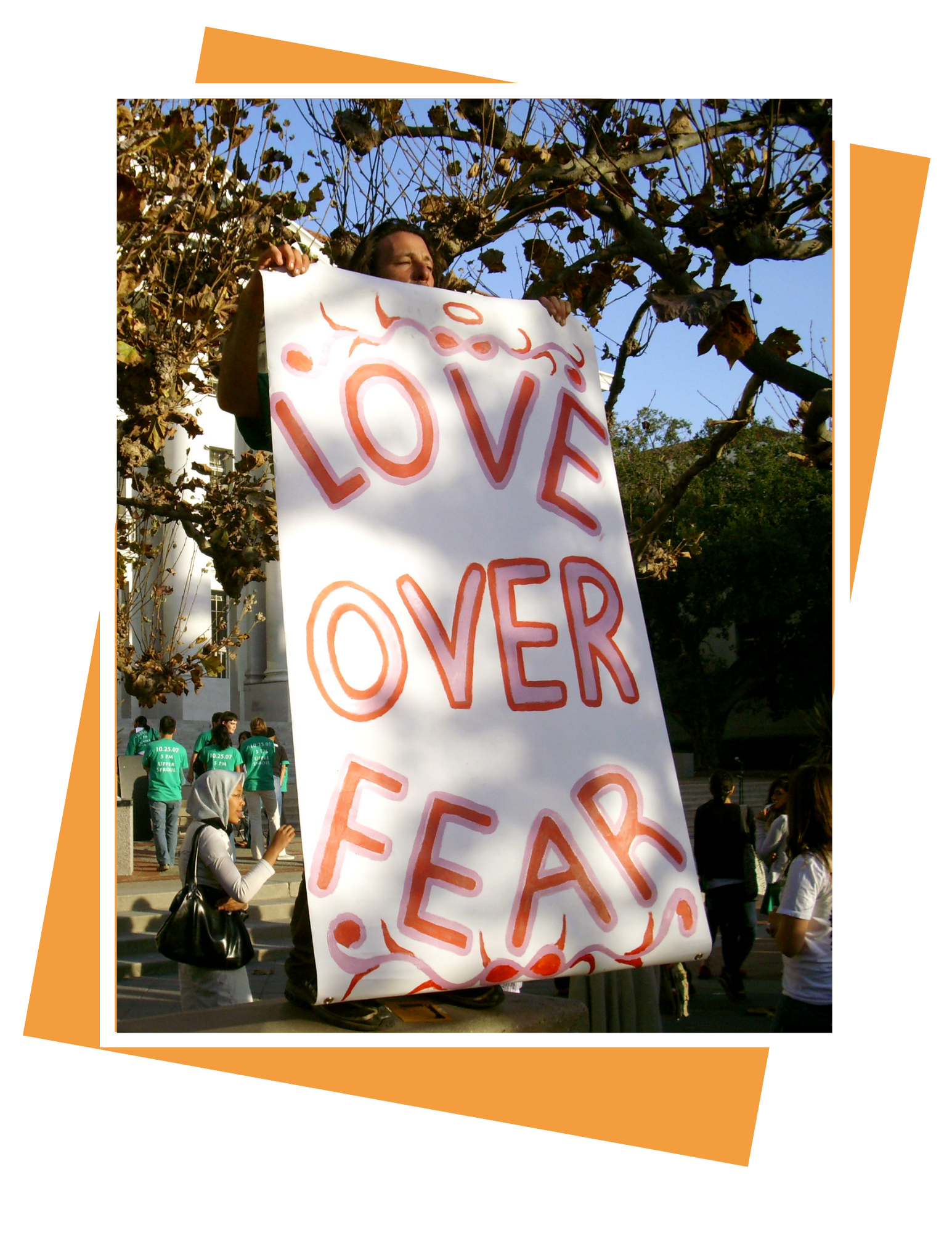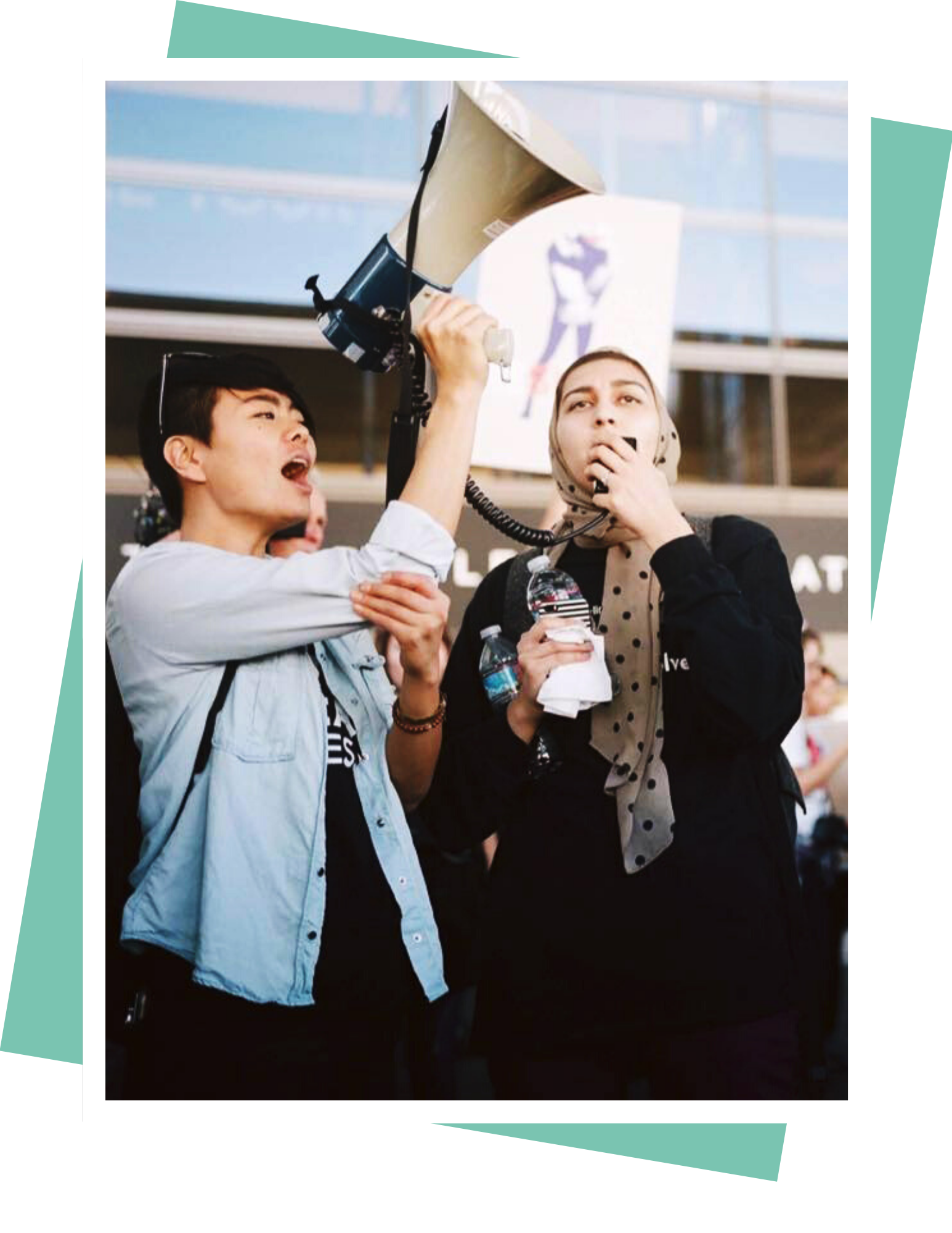Hate Crimes: A welcoming place is also a safe place that is free from any kind of hostility.
Each indicator page features a series of charts, insights and analysis, case studies, resources, and related indicators.
Insights and Analyses
- Hate crimes data are limited as they do not fully capture all hate incidents. In addition, the volume of reported hate crimes are impacted by factors like differences in policies across law enforcement agencies, differences in investigation procedures, and likelihood of individuals to report hate crimes.
- Hate in America reveals that immigrants may not report hate crimes due to the fear associated with interactions with law enforcement. The L.A. County Commission on Human Relations’ annual hate crimes report also lists other factors that can prevent victims from reporting hate crimes, including retribution, cultural and language barriers, unfamiliarity with the criminal justice system, former negative encounters with law enforcement, and fear of unwarranted publicity that can reveal sexual orientation and gender identities.
- A mapping project by ProPublica featuring 2016 Hate Crime statistics from the Federal Bureau of Investigation (FBI) revealed that compliance with reporting hate crimes varied by state and larger law enforcement agencies (LEAs) were more likely to report at least one hate crime. The analysis further highlights the 100 largest LEAs across the U.S. that reported zero or minimal hate crimes, including agencies in local California jurisdictions such as Anaheim, Irvine, Stockton, and Kern County, among others.
- An analysis by the U.S. Department of Justice of data from the National Crime Victimization Survey, showed that between 2015 and 2019, 42% of violent hate crime victimizations went unreported. Some of the reasons for this underreporting included that the situation was handled differently, victims believed police could not or would not provide any support, and the incident was not significant enough to report.
- In light of the increased number of hate incidents against Asian Americans, community organizations have released statements and resources advocating for investment in culturally relevant and trauma-informed services and cross-racial community and solidarity building. These organizations have developed resources such as bystander trainings and community safety toolkits to encourage Asian Americans to pursue alternative options over calling the police.
- LA vs HATE, a community-centered campaign in Los Angeles County, is working to approach the standardization of hate; create an understanding around acts of hate and reporting; and support communities in their healing process. They have developed resources such as digital content, program updates, and additional materials that include bystander intervention trainings.
- In 2014, reported hate crimes throughout California were at an all-time low. Between 2014 and 2020, there was an uptick in the rate of hate crimes reported, increasing from 2.0 per 100,000 people to 3.4 per 100,000 people.
- Race/ethnicity/ancestry continues to be the top bias motivation for hate crimes reported throughout California. Between 2002 and 2020, nearly 60% of hate crimes reported in California were motivated by bias against a victim's race/ethnicity/ancestry.
- The California Department of Justice’s (DOJ) 2021 Hate Crime report reveals that between 2012 and 2021, anti-Blackness was the top specific bias motivation for hate crimes categorized under race/ethnicity/national origin.
- The California DOJ’s 2021 Hate Crime report also reveals that hate crimes that involved racial bias rose by 33% from 2020 to 2021. During this same time period, hate crimes that involved anti-Black or African American bias increased by nearly 13%, hate crimes that involved anti-Hispanic or Latino bias rose by about 30%, and hate crimes that involved anti-Asian bias rose by nearly 178%.
- STOP AAPI Hate has recorded nearly 11,500 incidents of anti-Asian discrimination across the U.S between March 2020 and March 2022, with a significant share of these reports occurring in California.
- Across the U.S., between 2014 and 2016, hate crimes motivated by anti-Muslim bias increased from 154 to 307, respectively.
- In 2021, the Council on American Islamic Relations (CAIR) California, received 54 reports of hate incidents and hate crimes throughout the state. A survey conducted in 2021 by CAIR California further revealed that Muslim students reported higher rates of bullying and discrimination as compared to the national average (20%), with about 47% of respondents reporting they experienced bullying for being Muslim.
The rise in hostile attacks against Asian Americans and Pacific Islanders (AAPI) has drawn increasing interest in improving hate crimes data collection – but these efforts raise concerns about the relationship between data collection and increased investment in law enforcement which often results in increased surveillance and targeting of people of color, including immigrants.
In California, the California Department of Justice (DOJ) Criminal Justice Statistics Center (CJSC) collects hate crime data from law enforcement agencies (LEA’s) across the state, publishing the data on Open Justice. A reflection of the federal definition, California’s definition of a hate crime often does not fully capture the hostility that can extend beyond the narrow definition of a “crime” and can occur in many forms, including bias or discrimination. Researchers also highlight other factors that further contribute to hate crime underreporting including police bias and misclassification, data collection, and victim reporting. Using 2016 data from the FBI Hate Crime Statistics, a report and mapping project by Pro Publica showed that the 100 largest LEA’s across the U.S. reported zero or minimal hate crimes, including agencies in local California jurisdictions such as Anaheim, Irvine, Stockton, and Kern County, among others. At the federal level, in an effort to improve hate crime data collection, in January 2021, the FBI phased out the Hate Crime Statistics Program (HCSP) arm of the Uniform Crime Reporting Program (UCR) and replaced it with the National Incident Based Reporting System (NIBRS). Although a more nuanced tool, many of the core issues plaguing data collection under HCSP persist.
In an effort to document incidents that would otherwise not be reflected in national hate crime reports, STOP AAPI Hate, a California-based coalition of Asian and Pacific community organizations and academics began to collect hate crime data during the early stages of the COVID-19 pandemic. Between March 2020 and March 2022, the coalition has documented nearly 11,500 hostile incidents against the AAPI community across the U.S. Moreover, a national survey in partnership with Edelman Data & Intelligence revealed that 20% of Asian Americans and 20% of Pacific Islanders experienced a hate incident either in 2020 or 2021. The data collected is also informing approaches to addressing anti-AAPI hate. For example, more than half of survey respondents identified education and community-based solutions as some of the most effective approaches to addressing hate incidents.
Although the desire to more accurately gather information on hate crimes is welcomed and needed, it is important to note that scholars and community advocates caution the state, researchers, and community stakeholders against data collection avenues that can further fund and expand the carceral state. They point to the need to move away from data collection by and for law enforcement that will serve to further their reach, increase surveillance of communities of color, and proliferate violence. Instead, scholars and community organizers propose to divest from police and channel funding to non-carceral community-based data projects, resources, and alternatives. In 2021, in response to the COVID-19 Hate Crimes Act, more than 100 AAPI groups wrote an open letter against the bill that included mostly data collection, noting that the legislation would bolster law enforcement while falling short of addressing the origins of anti-Asian violence. They also pointed to the harm that this bill perpetuates, as it provides evidence for more investment in police which has a long history of targeting Black communities as well as Muslim and Chinese Americans.
To visit the STOP AAPI reporting center and access their resources, click here. To read more about how LEA’s can misclassify and underreport hate crime data read ProPublica’s article here. Read more about the challenges of carceral data collection and alternative possibilities here.
Photo credit: Hossam el-Hamalawy

Strategic multiracial solidarity efforts push back against Islamophobia.
Vigilant Love, a grassroots organization, brings together Los Angeles-based Japanese American and Muslim American communities to challenge Islamophobia and violence through direct action, political education, artistic performances, and open vigils for community building. In February 2017, after the first iteration of the “Muslim Ban” executive order was enacted, Vigilant Love organized a nonviolent sit-in and rally at the Los Angeles International Airport’s Tom Bradley International Terminal, drawing about 3,000 people. traci ishigo from Vigilant Love shares the importance of multiracial solidarity:
“When there are moments of socio-political fear that’s weaponized against marginalized communities, we actually need to be practicing and staying true to a sense of vigilant love. That includes creating safety and protection, rather than a hyper-vigilance or fear of certain communities, which only leads to further violence against people of color. For the Japanese American community, who knows what it’s like to be surveilled, forcibly removed, separated from their families, and then incarcerated, there’s just a high sense of responsibility and need to relate to communities who are being directly impacted today. When you show up in solidarity, it’s an opportunity for honoring our history, which serves for intergenerational healing. It also reaffirms the injustice that happened to our communities so that it doesn’t happen again to Muslim Americans or other targeted communities. And so for me, it's deeply important that Japanese Americans are showing up alongside Muslim Americans to build those actual relationships so that strategic solidarity can be possible.” To learn more about their strategies, visit Vigilant Love.
On January 2021, the Biden administration rescinded the Muslim Ban. However, this decision does not erase the irreparable damage created by these policies and the challenges that impacted immigrant communities continue to face. In early 2021, many advocates were pushing for the No Ban Act, a bill that was re-introduced and that would limit future administrations from instating discriminatory bans. Read the Council on American Islamic Relation’s press release on the repeal of the Muslim Ban here. Learn more about the re-introduction of the No Ban Act here and here. In early 2022, delays due to the pandemic and visa backlogs continued to impact those from Muslim countries trying to emigrate, many of whom have spent years trying to reunite with family in the U.S. Read more here and listen to how the Muslim ban continues to affect families five years later.
Photo credit: Daniel Tomita

Resources
- Resources:
- Reports:
- Report to the Nation: 2020’s – Dawn of a Decade of Rising Hate
- Two Years and Thousands of Voices: What Community-Generated Data Tells Us About Anti-AAPI Hate
- CAIR California Annual Legal Report 2022
- Anti-Asian Hate, Social Isolation, and Mental Health among Asian American elders during COVID-19
- Examining Islamophobia in California Schools
- Los Angeles County Commission on Human Relations 2020 Hate Crime Report
- 2020 Orange County Hate Crimes Report
- Exploring Alternative Approaches to Hate Crimes
- The Rising Tide of Violence and Discrimination Against Asian American and Pacific Islander Women and Girls
- Articles:
- Newsom signs bill targeting harassment and hate in public spaces
- Report reveals California’s ‘epidemic of hate’ up sharply, with Asian communities hard hit
- Anti-black, gay, Asian bias fuel California hate crime surge
- Examining why hate crimes are at historic highs – especially in Los Angeles
- Hate Crimes in L.A. and other U.S. cities jump to levels not seen in decades, study finds
- In UCLA survey, most California Latino, Asian immigrants perceive racial discrimination at work
- Two Decades After 9/11, Muslim Americans Still Fighting Bias
- Against carceral data collection in response to anti-Asian violences
- Reports of Anti-Asian Assaults, Harassment and Hate Crimes Rise as Coronavirus Spreads
- Supervisors Vote to Restart Human Relations Commission, San Diego County
- The Dark Figure of Hate Crime Underreporting
- Hate crimes against American Muslims up 15%, says CAIR
- Hate crime fell in U.S. in 2018. But that’s not what happened in Fresno, Valley
- Assaults against Muslims in U.S. surpass 2001 level
- Latest FBI numbers show anti-Muslim hate crimes continue to rise, suggest growing shift toward violence against people


